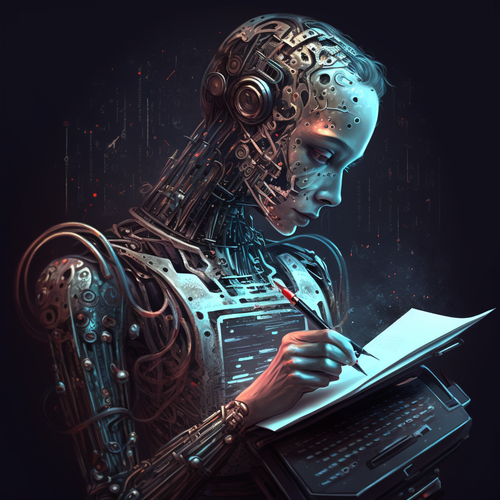The expansion of Artificial Intelligence is redefining almost all industries and sectors. And content creation is no exception. AI applications are helping designers and writers in various creative processes. From automating tasks to offering a more diversified scope for brainstorming, AI becoming an important ingredient that is helping professionals achieve a greater level of efficiency and creativity.
We know that content creation requires a well-set of creative devices. A smart laptop helps in enhancing workflow, optimizing designs and generate high-quality content with ease and precision. However, many other AI devices are helping content creators generate engaging content and reach their target audience more dynamically.
So, in this article, we will discuss the 4 major AI innovations that are changing the face of content creation for writers and designers.
1. Generative AI Design for Graphics and Visuals
Generative AI designs are one of the biggest advantages for designers, that allow them to choose from a variety of high-quality AI designs. Generative AI uses several algorithms to craft designs based on specific inputs and patterns. Designers can explore countless designs and insert them according to the project requirements.
- Using algorithmic designs helps you automatically generate design variations based on your project criteria, such as aesthetic preferences, design size and overall quality. It is typically important when working on multiple project designs with time constraints.
For example, Adobe Sensei offers generative computational designs to create optimized designs, automatically providing designers with multiple options.
- Adobe Sensei uses AI to automate repetitive tasks, enhance photo editing, and suggest design enhancements based on user input. This AI-driven innovation enables graphic designers to focus more on creativity and less on manual adjustments.
2. Advanced Writing Assitance With NPL
NPL, or Natural Language Processing, is becoming a haven for writers as it enables machines to understand and generate human language. NPL uses machine learning to understand human language and communicate ideas more informally, just like humans do. Moreover, many NPL tools assist in everything from grammar checking to content generation and even creative writing.
Some of its main technologies include:
- GPT models like Open AI include ChaptGPT, which works on human-generated commands. The speciality of these models is that they understand human context, generate coherent paragraphs, and even mimic specific writing styles.
- Additionally, NPL allows writers to convert text-to-speech and speech-to-text to facilitate the conversion of spoken words into written text and vice versa, aiding writers in drafting content more efficiently.
- Grammarly and Hemingway Editor are the best examples. These tools analyze the structure and readability of writing. They use advanced algorithms to suggest improvements in sentence structure, word choice, and clarity, helping writers fine-tune their content.
3. AI Image Recognition and Editing
When it comes to complex editing tasks like object detection or background removal, AI image recognition helps designers save time by automating various tasks. If you talk about a smart laptop or AI laptop, it uses Deep Learning algorithms to identify objects in images, isolate them, and perform edits or manipulations with high accuracy.
- Technologies like Convolutional Neural Networks are designed to process and analyze visual data. These networks identify patterns and help in recognizing objects in images, making tasks like object removal, facial recognition, or auto-enhancement more efficient.
- Additionally, style transfer algorithms help designers apply the style of one image to another, such as transforming a photo into a painting or adjusting the color palette of an image to match a desired aesthetic.
For example, tools like Deepart AI help designers apply artistic styles from famous artists to any image. This has become popular for creating customized artwork and unique design concepts.
4. AI targeted Content Creation
AI helps content creators craft compelling strategies to engage audiences at a deeper level. It helps you create personalized content By analyzing user data and behavior, AI can suggest personalized content, enabling writers and designers to create highly targeted materials.
- It is done with the help of Machine Learning algorithms that analyze data patterns, such as user behavior, engagement, and preferences, to recommend content that aligns with the individual’s interests or previous actions.
- Designers can create curated content that is most likely to resonate with a specific audience, providing writers and designers with the tools to craft content that speaks directly to the needs and desires of their target market.
- For example; Canava AI suggests you various design layouts, color schemes, and even stock images based on the user’s previous designs and preferences, allowing for consistent, personalized content creation.
Final Takeaways
In a nutshell, for content creation, AI has become an integral part, helping designers and writers to take their creative skills to the next level. From Generative AI content to targeted content creation, AI is offering creative assistance enabling creative personals to work smarter, not harder.
With advancements in AI, the future of content creation looks bright allowing people to utilize its full potential and create more engaging and personalized content.
















